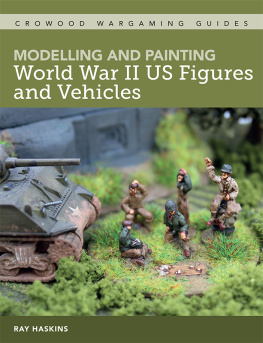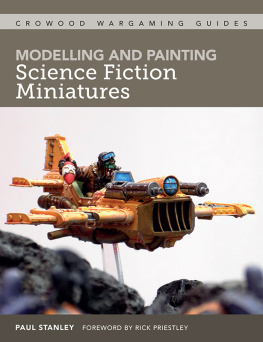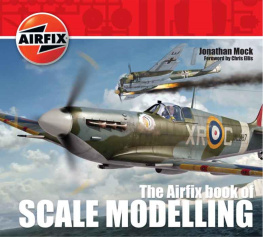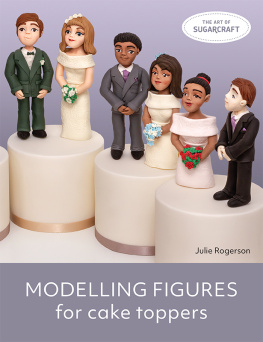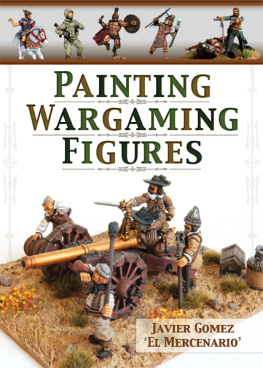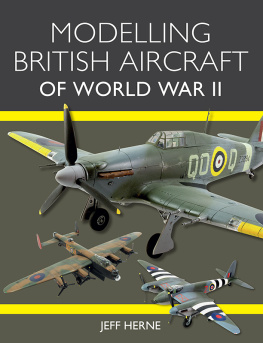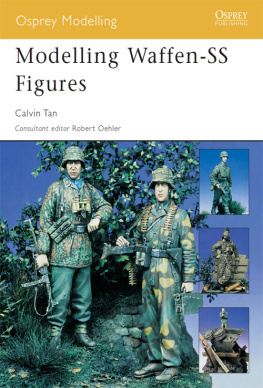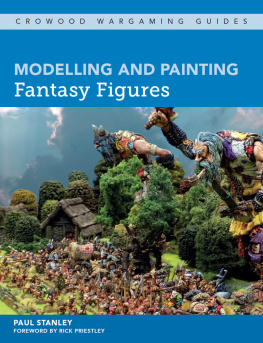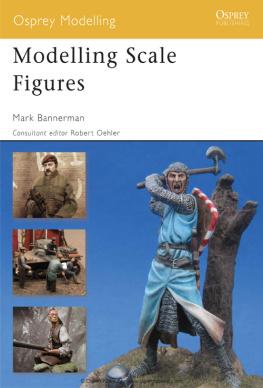RAY HASKINS - MODELLING AND PAINTING WWII US FIGURES AND VEHICLES.
Here you can read online RAY HASKINS - MODELLING AND PAINTING WWII US FIGURES AND VEHICLES. full text of the book (entire story) in english for free. Download pdf and epub, get meaning, cover and reviews about this ebook. City: S.l., year: 2020, publisher: THE CROWOOD PRESS LTD, genre: Home and family. Description of the work, (preface) as well as reviews are available. Best literature library LitArk.com created for fans of good reading and offers a wide selection of genres:
Romance novel
Science fiction
Adventure
Detective
Science
History
Home and family
Prose
Art
Politics
Computer
Non-fiction
Religion
Business
Children
Humor
Choose a favorite category and find really read worthwhile books. Enjoy immersion in the world of imagination, feel the emotions of the characters or learn something new for yourself, make an fascinating discovery.
- Book:MODELLING AND PAINTING WWII US FIGURES AND VEHICLES.
- Author:
- Publisher:THE CROWOOD PRESS LTD
- Genre:
- Year:2020
- City:S.l.
- Rating:3 / 5
- Favourites:Add to favourites
- Your mark:
- 60
- 1
- 2
- 3
- 4
- 5
MODELLING AND PAINTING WWII US FIGURES AND VEHICLES.: summary, description and annotation
We offer to read an annotation, description, summary or preface (depends on what the author of the book "MODELLING AND PAINTING WWII US FIGURES AND VEHICLES." wrote himself). If you haven't found the necessary information about the book — write in the comments, we will try to find it.
RAY HASKINS: author's other books
Who wrote MODELLING AND PAINTING WWII US FIGURES AND VEHICLES.? Find out the surname, the name of the author of the book and a list of all author's works by series.
MODELLING AND PAINTING WWII US FIGURES AND VEHICLES. — read online for free the complete book (whole text) full work
Below is the text of the book, divided by pages. System saving the place of the last page read, allows you to conveniently read the book "MODELLING AND PAINTING WWII US FIGURES AND VEHICLES." online for free, without having to search again every time where you left off. Put a bookmark, and you can go to the page where you finished reading at any time.
Font size:
Interval:
Bookmark:

MODELLING AND PAINTING
World War II US Figures
and Vehicles
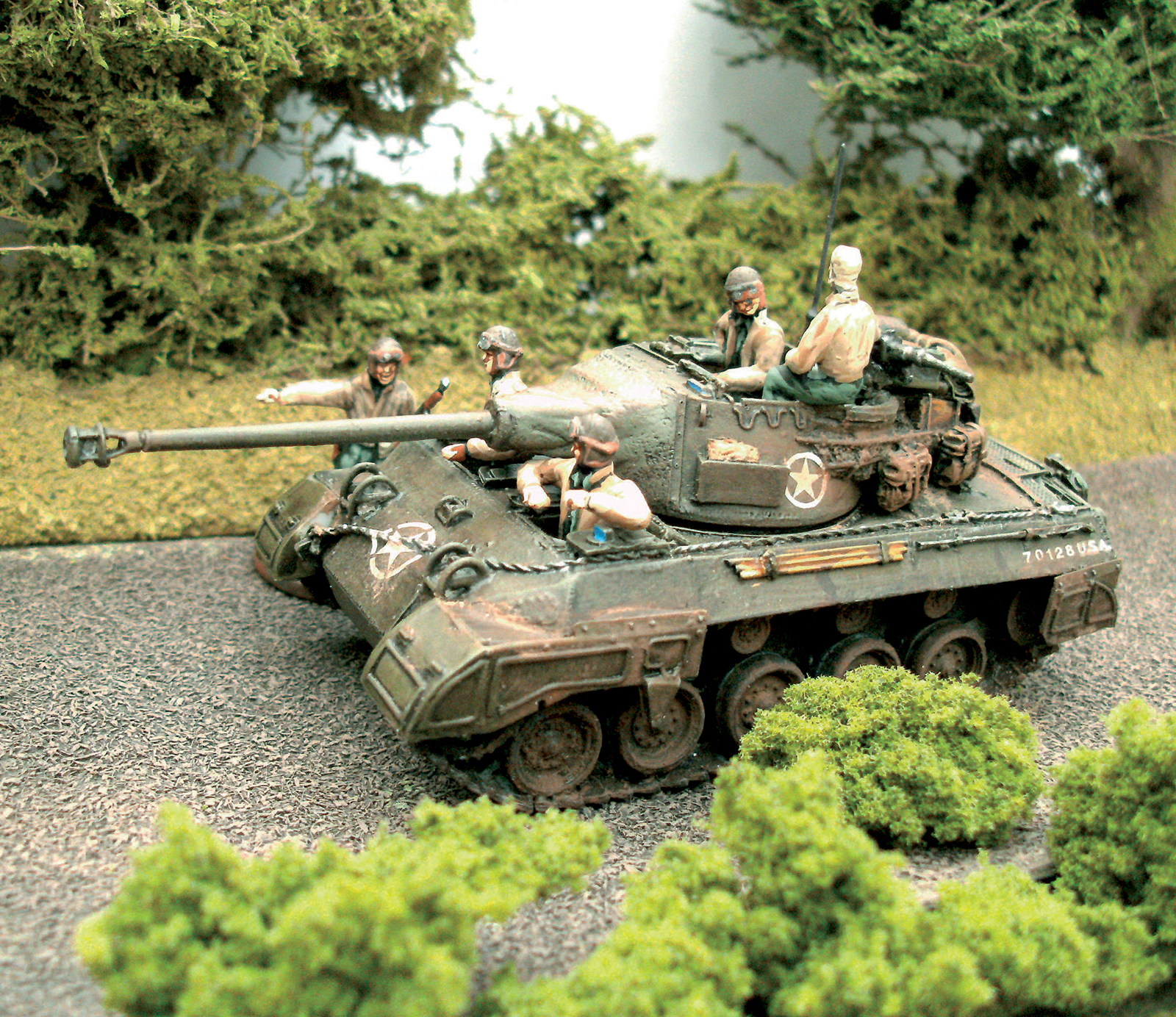
MODELLING AND PAINTING
World War II US Figures
and Vehicles
RAY HASKINS

First published in 2020 by
The Crowood Press Ltd
Ramsbury, Marlborough
Wiltshire SN8 2HR
www.crowood.com
This e-book first published in 2020
Ray Haskins 2020
All rights reserved. This e-book is copyright material and must not be copied, reproduced, transferred, distributed, leased, licensed or publicly performed or used in any way except as specifically permitted in writing by the publishers, as allowed under the terms and conditions under which it was purchased or as strictly permitted by applicable copyright law. Any unauthorised distribution or use of this text may be a direct infringement of the authors and publishers rights, and those responsible may be liable in law accordingly.
British Library Cataloguing-in-Publication Data
A catalogue record for this book is available from the British Library.
ISBN 978 1 78500 716 3
Acknowledgements
I WOULD LIKE TO thank a few people without whom I would not have been able to illustrate this book, or indeed experience building and painting such fine figures and models: Tony Barton, the designer of AB miniatures, Tom Walsh, owner of Milicast Models, Tony Chadburn of Raventhorpe Miniatures, who provided the 20mm figures used in two chapters, Mark Dixon of CP Models and TQD Castings and Matt Hingley of Elhiem Miniatures.
A special thank you goes to Owen Conner, the Uniforms and Heraldry Curator at the National Museum of the Marine Corps, Triangle, Virginia, who very kindly provided the pictures of museum artefacts that feature in . Owen was also kind enough to write the captions for those pictures as well, which describe them perfectly.
Preface
T HE AIM OF THIS book is to bring the US Army of World War II to life on the gaming table as well as the display cabinet for both wargamer and collector alike. Practical step-by-step instructions demonstrate how to create realistic models in metal, resin and plastic, using various techniques from hand painting to airbrushing.
My modelling career started in the mid-1970s when, five years old and living in Enniskillen, Northern Ireland, I received my first Airfix kit. This sparked an interest that has grown and developed over the years, allowing me to graduate from modelling with plastic soldiers to modern metal versions. It has been a journey that could be rather trying at times, but mostly it has been engrossing and enjoyable.
I still have very fond memories of taking the weekly Saturday journey into town with my mother while she did her shopping, and waiting patiently until we could, at last, visit the local toyshop, which seemed to stock every Airfix kit available. After handing over my pocket money for the chosen kit, the journey home was filled with anticipation and excitement at the prospect of building my latest prize. At that time painting the models was optional, but the fun I had in building them was boundless.
Many years later, and a lot older, I am happy to say that I still feel that same excitement at the thought of tackling a new modelling subject, no matter what size: from a small kit with only a few parts to one with many hundreds. I am an avid modeller in 1:72 and 1:76 scales, Wargaming is a significant part of my modelling hobby and I enjoy every aspect, from researching a unit to using it on the tabletop battlefield.
Introduction
M ODELLING IS A PERSONAL hobby: all modellers like to add their own mark or style to the work they do. Taking this into account, this book provides a guide to show how to achieve pleasing results. As such, the reader is encouraged to take what they need from it, and to add or adapt the techniques shown to their preferred way of doing things. Good modellers continually develop their practical skills and are not afraid to try new techniques. This is part of the joy of modelling.
Modelling products and materials have changed quite dramatically over the last ten years: there is now a wealth of products available that have changed the hobby for the better. It is now much easier for the newcomer to make a start in modelling with just a few select items that will enable a standard-built model to become unique and something to be proud of.
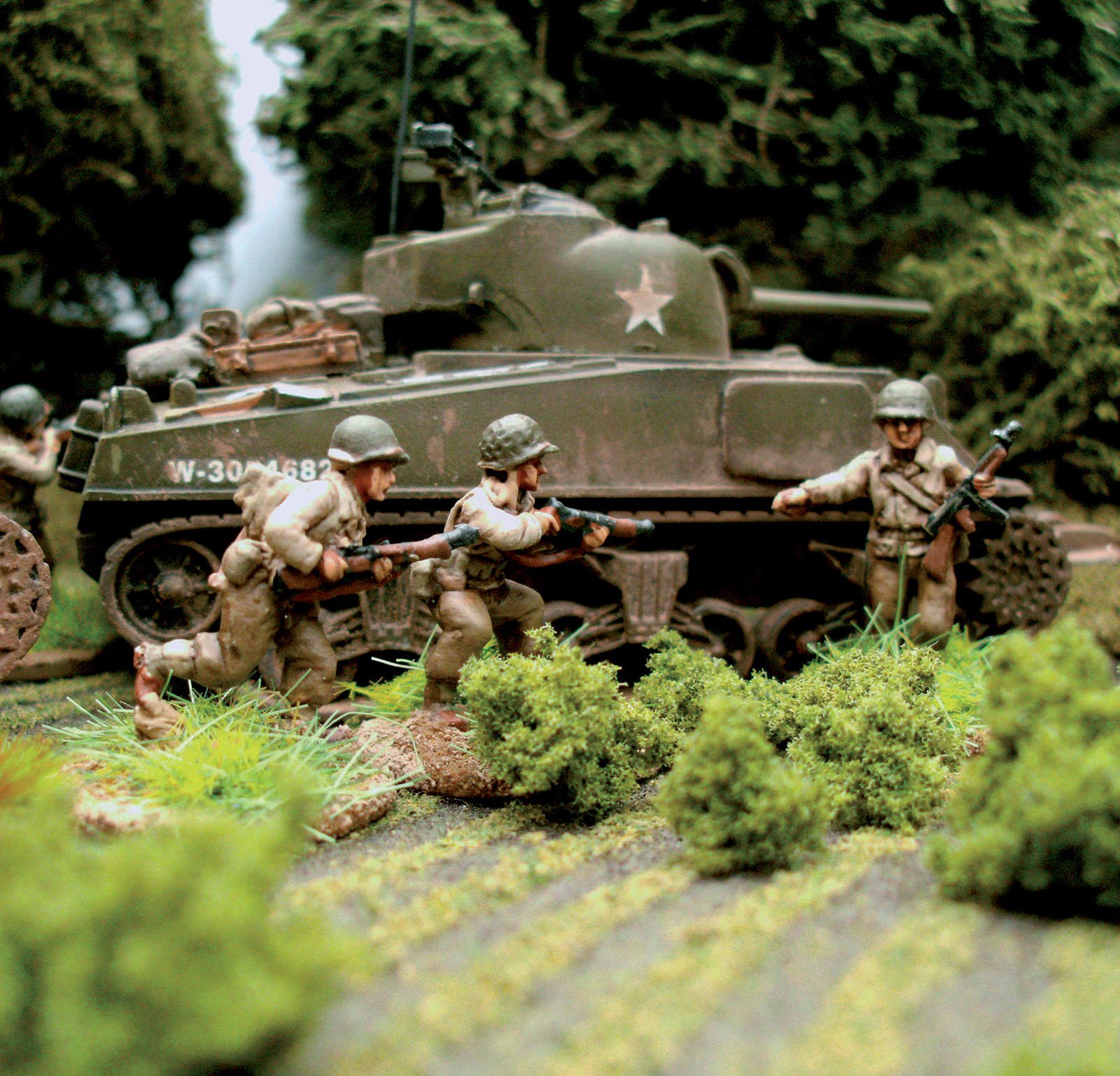
DO YOUR HOMEWORK
When thinking of modelling a tank that fought in Normandy in June 1944, for example, find out about:
 the units that operated it, their uniforms and their kit
the units that operated it, their uniforms and their kit
 where they fought and against whom the time of year and/or the predominant weather conditions at that time
where they fought and against whom the time of year and/or the predominant weather conditions at that time
 the type of terrain/groundcover
the type of terrain/groundcover
 the markings it may have carried, such as the names painted on it by its crew
the markings it may have carried, such as the names painted on it by its crew
An important, and sometimes overlooked, aspect of modelling is research. This should be the cornerstone of any modelling project from the very beginning. What?, where? and how? are three questions that provide an important starting point and will help to steer further investigation. Background research at this stage could help to avoid a disastrous end result, so time spent checking up on details, via the internet or through relevant books or television programmes, is always time well spent.
During WWII the US armed forces standardized the equipment they used. The term GI, which is an abbreviation of Government Issue, arose and is still in use today to describe American soldiers during WWII. (By contrast, US soldiers in WWI were nicknamed doughboys.) Every soldier, sailor and airman was issued with the same kit relevant to their role and location at that time during the war, from the Central Pacific to the freezing cold of the Belgian Ardennes. A paratrooper who landed in Normandy in June 1944 wore a different uniform to one who fought during Operation Market Garden in September 1944, just a few months later. The difference between the uniforms worn by the Marines who fought on Wake Island in 1941 and those who fought on Tarawa in 1944 is vast. The exception to this is the tank crews, who wore more or less the same uniform, with only minor variations, all through the war.
Then there are vehicle markings: the US Army did not always use a white star on their vehicles; in fact, in the early days of WWII they used a yellow star in North Africa.
Following on from the recommendation to undertake research, there is little point in writing this book without providing some historical context to the models. As such, this book is divided into several chapters, each covering a specific theatre of the war in which US forces were involved. Presented in chronological order, the chapters start in the Pacific from 1941 to 1945 and end in war-torn Germany in May 1945. Features specific to each campaign are modelled, such as the relevant uniforms and equipment, and the main supporting vehicles. Where models could potentially have been included in a number of chapters, they appear in the chapter covering the period during which they had the most impact: the models of tracked landing vehicles (LVT), for example, have been included in the Pacific chapter as they were first used in a combat role at the Battle of Tarawa in 1943 and prior to this they were only used to bring supplies from ship to shore. Similarly, although paratroopers were deployed in the Allied invasion of Sicily in 1943, it was in Normandy in 1944 where they had the most significant impact.
Font size:
Interval:
Bookmark:
Similar books «MODELLING AND PAINTING WWII US FIGURES AND VEHICLES.»
Look at similar books to MODELLING AND PAINTING WWII US FIGURES AND VEHICLES.. We have selected literature similar in name and meaning in the hope of providing readers with more options to find new, interesting, not yet read works.
Discussion, reviews of the book MODELLING AND PAINTING WWII US FIGURES AND VEHICLES. and just readers' own opinions. Leave your comments, write what you think about the work, its meaning or the main characters. Specify what exactly you liked and what you didn't like, and why you think so.

